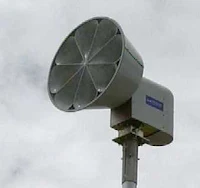Did you know that Japan 8.9 earthquake triggers a massive Tsunami?
Did you know that Japan take the tsunami threat so seriously that one university even has a specialist engineering faculty to study the natural effect?
Did you know that there is also a Tsunami Warning Service, established in 1952, and run by the Japan Meteorological Society (JMA)?
Did you know that six regional centres connected up to 300 sensors located across Japan's islands, including around 80 water-borne sensors, monitor seismic activity round the clock?
Did you know that if an earthquake looks as if it has the potential to trigger a tsunami, the JMA issues an alert within three minutes of it being identified?
Did you know that the alerts are broadcast on all radio and TV channels, and if necessary an evacuation warning is also given?
Did you know that the JMA aims to give people in the path of the wave at least 10 minutes' warning to evacuate the area?
Did you know that local authorities, central government and disaster relief organisations also get warnings via special channels so they can respond to a disaster swiftly?
Did you know that the JMA's network is so sophisticated that it can predict the height, speed, destination and arrival time of any tsunami destined for Japanese shores?
Did you know thatTsunami waves can attain speeds of up to 1000km/h in the open seas?

Did you know that one of the more prominent countries which have implemented tsunami walls is Japan? Japan has extensively built tsunami walls of height 4.5 metres in some high density coastal areas. Other features accompanying the tsunami walls are floodgates and channel to redirect water in the event of a tsunami.
 Did you know that warning signs are relatively important as they inform people, especially foreigners of the local dangers and appropriate action to take in case of a tsunami?
Did you know that warning signs are relatively important as they inform people, especially foreigners of the local dangers and appropriate action to take in case of a tsunami?
Did you know that even with all these precautions and warning systems, Japan still remains at risk?
Did you know thatTsunami waves can attain speeds of up to 1000km/h in the open seas?

Tsunami Walls
Mangrove Trees
Did you know that Mangrove trees planted along the coasts can significantly help to reduce the destruction caused by tsunami waves as the mangrove trees can act as a barrier and reduce the force of the oncoming waves.
In addition, environmentalists believe that the removal of coastal mangrove trees could have intensified the effect of the tsunami in some locations.
Sirens
Did you know that it is important to install sirens on the beaches in tsunami prone areas in order to warn the local population of an incoming tsunami? Having sirens is effective because it is loud in delivering the warning.
Warning Signs
 Did you know that warning signs are relatively important as they inform people, especially foreigners of the local dangers and appropriate action to take in case of a tsunami?
Did you know that warning signs are relatively important as they inform people, especially foreigners of the local dangers and appropriate action to take in case of a tsunami?
Now if you didn't know, now you know...





No comments:
Post a Comment